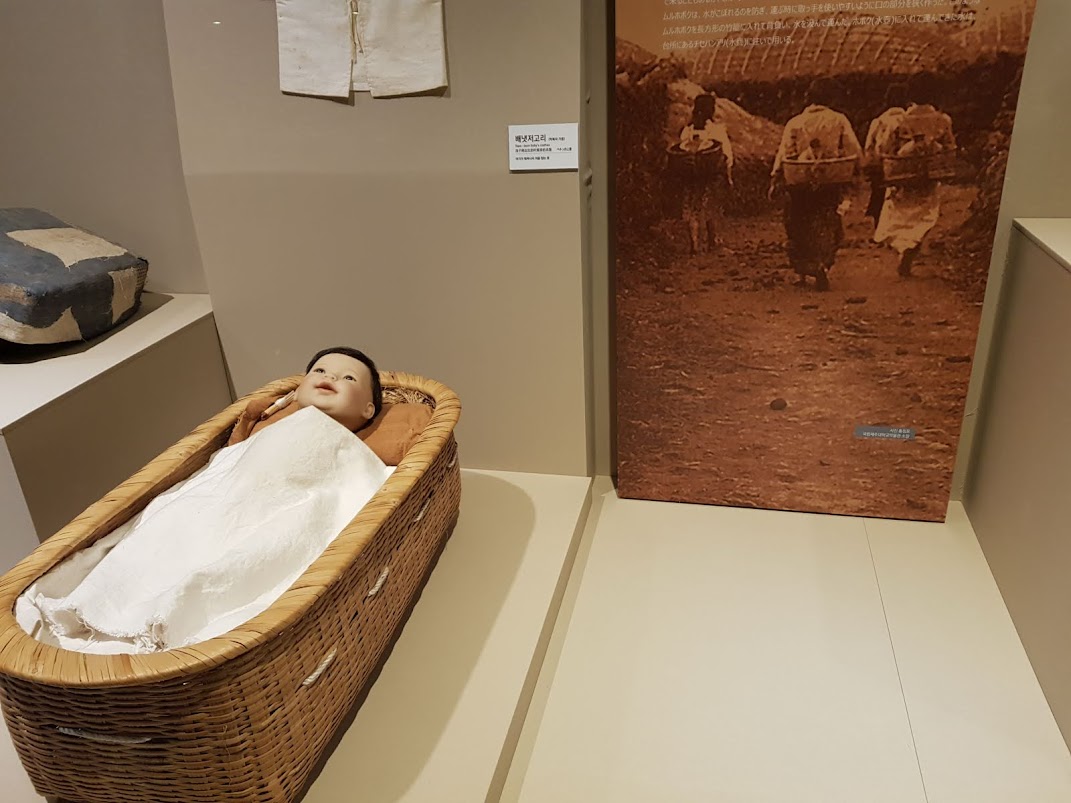8 November 2022
Those who are familiar with Jeju or who had watched recent Korea dramas featuring Jeju, e.g. “Our Blues”, would have known about “haenyeo”.
A "haenyeo" is a woman diver who gathers marine products for a living, and Jeju is home to the largest number of them in Korea. Equipped with only a lead-weighted vest and goggles, the haenyeo would plunge into waters, dive underwater and hold their breath for up to two minutes while gathering clams, abalone or seaweed from the ocean floor.
The vast majority of living haenyeo are now over the age of 70 and this is a disappearing trade. Hence the importance of a museum dedicated to record, preserve and provide education about this fast disappearing culture.
I included this museum into our itinerary as I felt we should learn more about the haenyeo culture while visiting Jeju.
The museum is located near the Sehwa coast in the northeastern part of Jeju. On arrival, I was surprised by the museum’s large and modern building, with a large open garden with various sculptures and a resting area in front of it.
Entrance fee is 1100 KWR per person. Upon entry, we were invited to watch a short video presentation of the Haenyeo culture. While waiting for the next screening of the video, I went to see the sculptures and art work displayed in the lobby.
After watching the video we went to explore the 3 exhibition halls.
Exhibition Hall 1 is entitled “Haenyeo Diver’s Life” and has a replica of a traditional haenyeo’s home, her meals and her traditional beliefs.
Jeju's thatched houses were built using stones, soil, wood, and belts that are easily available in nature. To overcome the strong rain and wind, the thatched roof was tied with a band, the walls were built using stones, and the fence was also built with stacked lava stones.
Jeju's Traditional Raft called the 'Tewoo'.
Replica of a traditional haenyeo’s home.
Earthen jars for storing rain water, preserving and storing food. Fishing nets and diving equipment hung on the wall.
When travelling, I always look forward to sampling the local cuisine. Hence the section on Jeju food was interesting. Because Jeju Island is surrounded by the sea on all sides, Jeju food culture is characterized by many dishes made with ingredients such as conch, abalone, sea urchin, and seaweed. They are cooked simply to retain natural flavour of the ingredients. They use only simple seasoning like soybean paste and boiled fish.
I was surprised when I saw in the video presentation that Haenyeo resumed their dives as soon as 3 days after childbirth. These women certainly had a hard life. No such thing as maternity leave for them.
The women dive daily, even through their pregnancies.
Because their livelihood and safety depended so much on nature, Haenyeo pray to Yeongdeung, the dragon god who they believe controls the sea. Before they begin their dive, there is a prayer for safety and a wealthy catch.
Shamanic rites being performed to make offerings to the dragon god. The lady in the colourful clothes is the Shaman.
Exhibition Hall 2 showcases the Jeju haenyeo's workplace, history, and community.
The clothes worn by Jeju haenyeo for diving are called 'mulot'. In the past, it consisted of 'mulsojunggi' (bottom), 'muljeoksam' (top), and 'water towel' to tidy up the hair.
From the early 1970s, haenyeo wore rubber wetsuits with lead belts, which allowed them to work for longer hours and greatly improved their efficiency.
Exhibit showing a Bulteok, a place for the diving women to change their clothes, as well as a place to rest and keep warm after a dive in the cold sea.
A Bulteok is a place for the diving women to change their clothes, as well as a place to rest, keep warm after a dive in the cold sea. A fire was lit in the middle of a round stone wall to warm the body. It is also a place where information and skills on materials work, such as knowledge about materials, tips on materials, and location of the sea, are passed on and acquired, and mutual cooperation among haenyeo is reaffirmed and decisions are made.
Haenyeo community is strong and regimental. The diving women do not arbitrarily jump into the sea and do things alone, but act according to the rules and laws that have been set. In addition, when working with material things, they do not work alone, but work together, and when they are in trouble, they can jointly cope with dangerous situations. Haenyeo cannot exist apart from the group. They even have a ranking or class system depending on their level of experience, age and virtue: high, mid or low class. Starting from as early as 11 years old, it takes seven years of training almost every day before a girl can be considered a fully qualified haenyeo.
Exhibition Hall 3 has an underwater theme called “The Sea” and displays the fishing industry’s culture. Traditional fishnets and fishing equipment are on display including small ship models and salt farm models.
Life-size model of a Jeju's Traditional Raft called the 'Tewoo'.
I think the 45 minutes at the Haenyeo Museum was well spent.
Our next stop would be at a restaurant in Sehwa that specialising in local abalone and seafood dishes. After a visit to the Haenyeo Museum, we could now better appreciate those abalones that we would be eating for lunch.































































